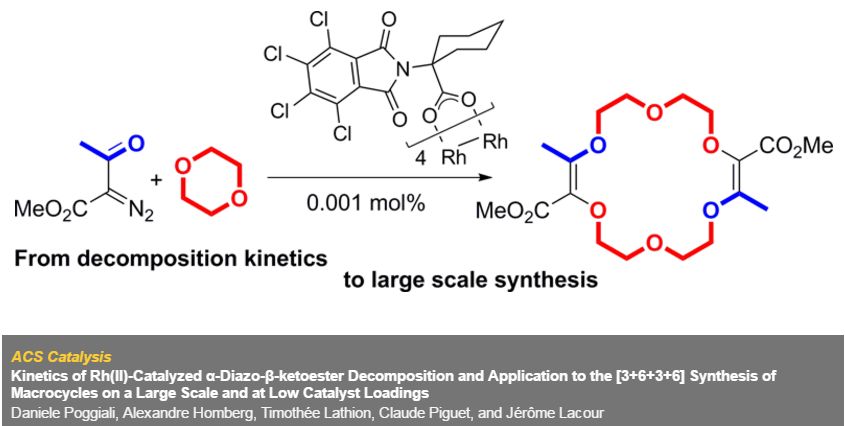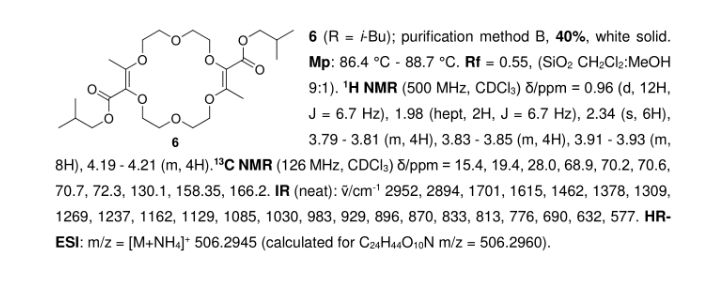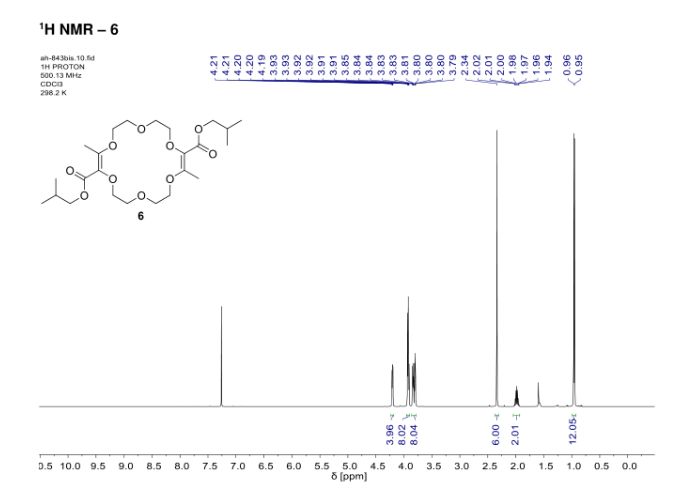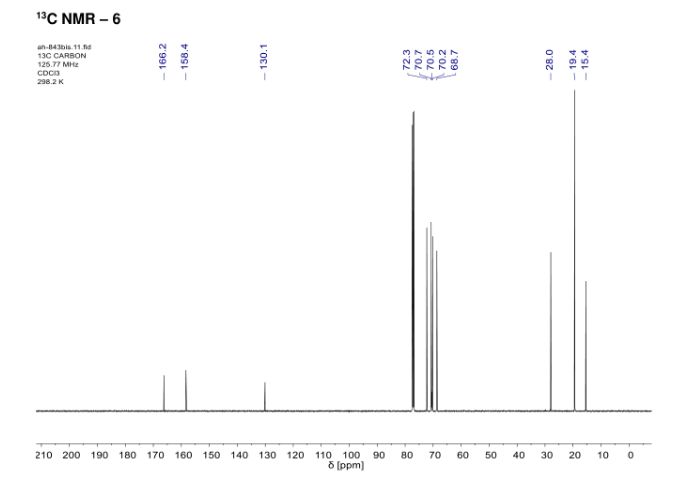Kinetics of Rh(II)-Catalyzed α-Diazo-β-ketoester Decomposition and Application to the [3+6+3+6] Synthesis of Macrocycles on a Large Scale and at Low Catalyst Loadings
†Department of Organic Chemistry and ‡Department of Inorganic and Analytical Chemistry, University of Geneva, 30 Quai Ernest Ansermet, CH-1211 Geneva 4, Switzerland
ACS Catal., 2016, 6, pp 4877–4881
DOI: 10.1021/acscatal.6b01283
*E-mail: jerome.lacour@unige.ch
In the context of [3+6+3+6] macrocyclization reactions, precise kinetics of α-diazo-β-ketoester decomposition were measured by in situ infrared (IR) monitoring. Dirhodium complexes of Ikegami–Hashimoto type—and perchlorinated phthalimido derivatives in particular—performed better than classical achiral complexes. Clear correlations were found between speciation among dirhodium species and catalytic activity. With these results, novel cyclohexyl-derived catalysts were developed, affording good yields of macrocycles (up to 78%), at low catalyst loadings (from 0.01 mol % to 0.001 mol %) and on a large scale (from 1 g to 20 g).
///////acceptor-acceptor diazo reagents, dirhodium complexes, in situ IR monitoring, kinetics, low catalyst loading, multigram synthesis, speciation, ylides
FAIRBANKS, ALASKA, USA
Hi Everyone. Today, we are going to our next USA state. We are going to
Fairbanks, Alaska.
Fairbanks lies about 120 miles south of the Arctic Circle. According to
an estimate in 2011, the population was about 32,000 people. It is
the home of Alaska's oldest college, the University
of Alaska Fairbanks.
The climate in Fairbanks is usually classified as subarctic with long,
cold winters, and short, warm summers. In Fairbanks, winter lasts
from late September until late early May. October through January are
the snowiest. The snowpack is established by October 18, on average,
and remains until May. Average winter low temperatures range from −15 °F
to −25 °F, but extremes can range from -50 to −60 °F. In
summer, temperatures typically range between 50 and 70 °F.
At the winter solstice, Fairbanks experiences 3 hours and 43 minutes of
sunlight. At the summer solstice, Fairbanks receives 21 hours and 49
minutes of direct sunlight; after sunset, twilight is bright enough to
allow daytime activities. During the winter, you can see the
spectacular color of the Northern Lights in the sky.
The state flower is the forget-me-not. The state bird is the willow
ptarmigan. The state nickname is "the last frontier". The state motto
is "north to the future".
I hope you enjoyed this trip to Fairbanks, Alaska.

DOWNTOWN IN SUMMER




MIDNIGHT IN THE SUMMER

HEART PARK


WINTER TIME
DOWNTOWN







TRAIN STATION

AIRPORT

WINTER NORTHERN LIGHTS - AURORA BOREALIS












UNUSUAL CLOUDS/SKY




CRUISING
ICE AND SNOW SCULPTURES





MOUNTAINS








IGLOO

DOG SLEDS




WILDLIFE

PIPELINE

FLORAL




UNIVERSITY OF ALASKA MUSEUM OF THE NORTH


ARE YOU KIDDING???

Hi Everyone. Today, we are going to our next USA state. We are going to
Fairbanks, Alaska.
Fairbanks, Alaska.
Fairbanks lies about 120 miles south of the Arctic Circle. According to
an estimate in 2011, the population was about 32,000 people. It is
the home of Alaska's oldest college, the University
of Alaska Fairbanks.
an estimate in 2011, the population was about 32,000 people. It is
the home of Alaska's oldest college, the University
of Alaska Fairbanks.
The climate in Fairbanks is usually classified as subarctic with long,
cold winters, and short, warm summers. In Fairbanks, winter lasts
from late September until late early May. October through January are
the snowiest. The snowpack is established by October 18, on average,
and remains until May. Average winter low temperatures range from −15 °F
to −25 °F, but extremes can range from -50 to −60 °F. In
summer, temperatures typically range between 50 and 70 °F.
cold winters, and short, warm summers. In Fairbanks, winter lasts
from late September until late early May. October through January are
the snowiest. The snowpack is established by October 18, on average,
and remains until May. Average winter low temperatures range from −15 °F
to −25 °F, but extremes can range from -50 to −60 °F. In
summer, temperatures typically range between 50 and 70 °F.
At the winter solstice, Fairbanks experiences 3 hours and 43 minutes of
sunlight. At the summer solstice, Fairbanks receives 21 hours and 49
minutes of direct sunlight; after sunset, twilight is bright enough to
allow daytime activities. During the winter, you can see the
spectacular color of the Northern Lights in the sky.
sunlight. At the summer solstice, Fairbanks receives 21 hours and 49
minutes of direct sunlight; after sunset, twilight is bright enough to
allow daytime activities. During the winter, you can see the
spectacular color of the Northern Lights in the sky.
The state flower is the forget-me-not. The state bird is the willow
ptarmigan. The state nickname is "the last frontier". The state motto
is "north to the future".
ptarmigan. The state nickname is "the last frontier". The state motto
is "north to the future".
I hope you enjoyed this trip to Fairbanks, Alaska.

DOWNTOWN IN SUMMER

MIDNIGHT IN THE SUMMER
HEART PARK
WINTER TIME
DOWNTOWN

TRAIN STATION
AIRPORT
WINTER NORTHERN LIGHTS - AURORA BOREALIS
UNUSUAL CLOUDS/SKY
CRUISING
ICE AND SNOW SCULPTURES
MOUNTAINS
IGLOO
DOG SLEDS
WILDLIFE
PIPELINE
FLORAL
UNIVERSITY OF ALASKA MUSEUM OF THE NORTH
ARE YOU KIDDING???





No comments:
Post a Comment